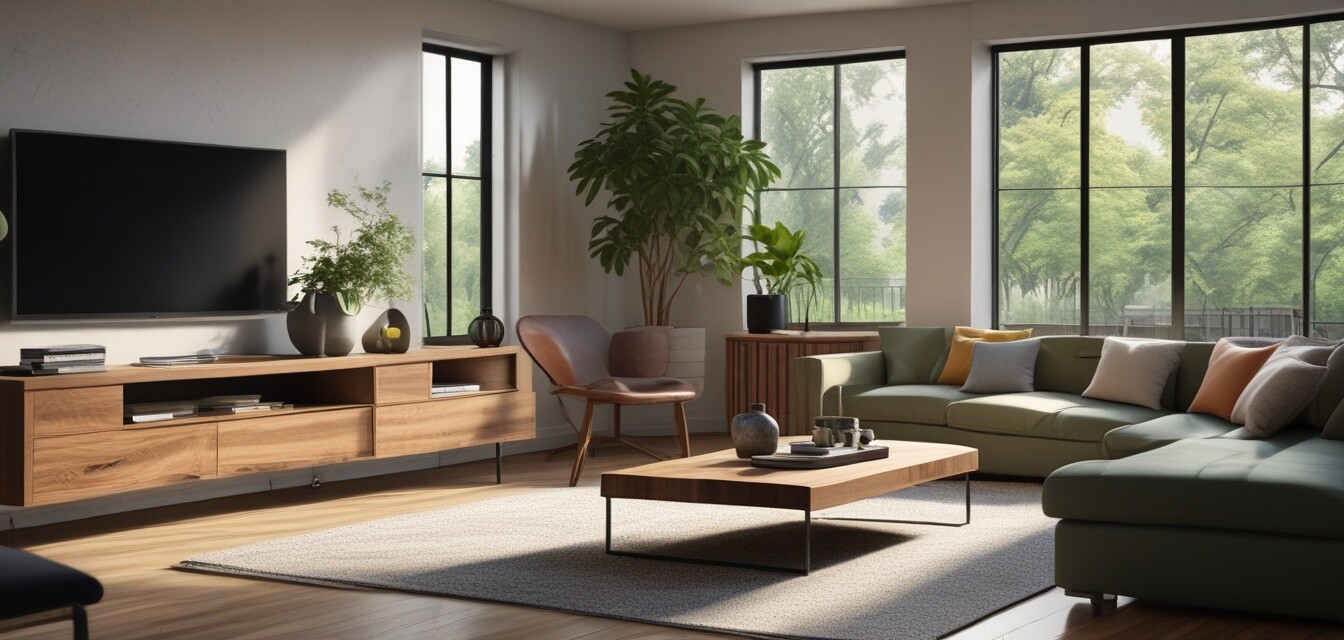
Integrating Sustainable Furniture into Urban Apartments
Key Takeaways
- Eco-friendly furniture can enhance the aesthetics and sustainability of your urban apartment.
- Choose materials like reclaimed wood, bamboo, and recycled metal for a greener choice.
- Utilizing space efficiently is crucial in urban settings—multifunctional furniture is key.
- Incorporating plants can improve air quality and create a serene atmosphere.
- Look for certifications that indicate sustainable practices when selecting furniture.
Living in an urban apartment comes with its set of unique challenges. Space is often limited, and making the most of it is essential. However, this does not mean you have to compromise on sustainability. Integrating eco-friendly furniture, such as sustainable TV stands, into your apartment can create a stylish and comforting space while contributing positively to the environment. Here are some effective tips to incorporate sustainable furniture into your urban setting.
Choosing the Right Eco-Friendly Materials
When selecting furniture for your apartment, it is crucial to consider the materials used. Opt for sustainable options that have minimal environmental impact. Here are some eco-friendly materials to look for:
| Material | Benefits | Considerations |
|---|---|---|
| Reclaimed Wood | Durable, unique aesthetics, reduces waste | Can be more expensive, may need treatment for pests |
| Bamboo | Fast-growing, renewable resource | Quality varies, look for FSC certified products |
| Recycled Metal | Strong and durable, reduces landfill waste | Heavy, may require metal treatments to avoid rust |
| Cork | Regenerative material, adds warmth | Limited design options compared to wood or metal |
Maximizing Space with Multifunctional Furniture
In an urban apartment, every square inch counts. Multifunctional furniture helps you to utilize your space effectively. Here're some ideas:
- Sofa beds: Perfect for accommodating guests without taking up extra space.
- Storage ottomans: Dual-purpose furniture that offers both seating and storage.
- Wall-mounted shelves: Great for displaying decor while saving floor space.
- Expandable dining tables: Useful for hosting friends but compact for daily use.
Embracing Natural Elements
Incorporating plants can enhance the aesthetic of your apartment as well as improve air quality. Urban living can often feel sterile, but the addition of greenery creates a soothing atmosphere. Consider the following:
- Choose low-maintenance plants: Options like snake plants and pothos thrive on minimal care.
- Utilize vertical gardens: An excellent way to bring in green without sacrificing floor space.
- Group plants: Arrange them in clusters for an eye-catching display.
Finding Sustainable Brands
When investing in sustainable furniture, it is essential to find brands committed to eco-friendly practices. Researching companies that prioritize sustainability helps ensure your choices align with your values. Look for the following:
- Certifications: Seek out products with labels such as FSC-certified or GreenGuard.
- Transparency: Brands that are open about their manufacturing processes are often more trustworthy.
- Customer Reviews: Look for feedback on durability and sustainability claims to ensure quality.
Tips for Maintenance
Maintaining Sustainable Furniture
Proper care is essential for the longevity of your eco-friendly furniture. Here are some tips to keep them looking their best:
- Regular Dusting: Use a soft cloth to keep surfaces clean.
- Avoid Excessive Moisture: Protect wood furniture by avoiding moisture exposure.
- Use Eco-Friendly Cleaners: Opt for natural cleaning products safe for the environment.
Conclusion
Integrating sustainable furniture into your urban apartment is not only beneficial for the environment but also for creating a stylish and functional home. By choosing the right materials, maximizing your space with multifunctional furniture, and embracing natural elements, you can transform your living area into a serene oasis in the city. Always remember to support brands that prioritize sustainability and practice good maintenance habits to ensure the longevity of your investments.
Pros
- Promotes environmental responsibility
- Enhances aesthetic appeal
- Maximizes space efficiency
- Can improve air quality through the use of plants
Cons
- Sustainable options can be more expensive
- Limited availability in certain areas
- May require more maintenance